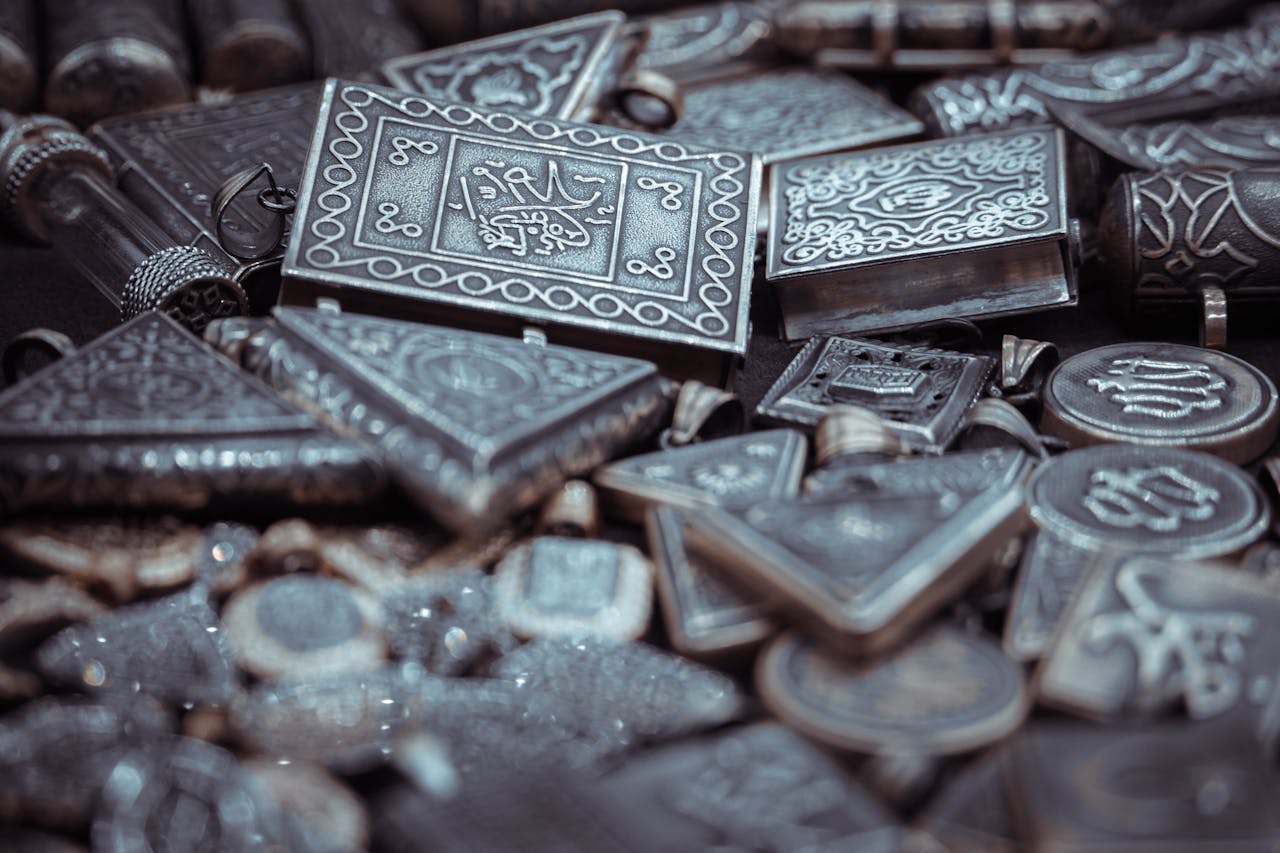
Every step we take is layered over centuries of forgotten stories. Beneath the dirt and dust of our everyday paths lie whispers of civilizations, rituals, and lives we’ll never meet—but are still somehow connected to. Most of us walk past without noticing. But every so often, someone stops. Or in this case, someone very small squats down, reaches into the earth, and pulls out a piece of the past.
That’s what happened in Israel’s Negev desert, where a toddler—barely old enough to speak in full sentences—stumbled across a 3,800-year-old artifact while hiking with his family. It wasn’t part of an excavation. There were no shovels or maps or professionals guiding the way. Just a curious child, an afternoon walk, and a relic from the Bronze Age waiting to be seen again.
What’s wild is how something so ancient can surface in such an ordinary moment. And maybe that’s the real message here: sometimes the universe hands you a reminder that time is a loop, not a line—and the hands that shape the future might also hold the past.

The Discovery: Ancient Pendant, Modern Moment
What began as a casual family hike through the rugged terrain of the Negev Desert in southern Israel turned into a story that captured the attention of archaeologists around the world. A toddler, just three years old, happened upon an object half-buried in the dirt. It was small enough to fit in his palm, weathered by time but unmistakably shaped by human hands. His parents, curious and respectful of its odd appearance, did something rare—they didn’t pocket it or toss it aside. They contacted the Israel Antiquities Authority, unknowingly opening a window into a civilization nearly 4,000 years gone.
Experts quickly determined that the object was a 3,800-year-old clay artifact from the Middle Bronze Age, likely crafted by the Canaanites. What makes this even more extraordinary is that the piece appears to depict a human figure—believed by some scholars to represent a fertility goddess or protective spirit. These types of figurines, according to the Antiquities Authority, were commonly placed in homes and possibly used in rituals tied to family health or childbirth. Though small in size, the artifact carries the weight of generations, beliefs, and cultural practices that shaped an entire era.
The fact that it was found by a child only adds to its symbolic power. In many ways, the pendant mirrors the innocence and mystery of the child who found it. It’s fragile, but meaningful. Ancient, yet discovered anew. And perhaps that’s the real poetry here—this wasn’t unearthed by a trained professional with tools and charts, but by a child guided by wonder. That moment reminds us how history doesn’t always wait for a camera crew or a dig site. Sometimes, it simply shows up in the hands of someone too young to know what they’re holding.

A Glimpse into the Bronze Age
Roughly 3,800 years ago, the region that is now modern-day Israel was home to a thriving network of Canaanite city-states. These communities were known for their complex trade systems, fortified cities, and spiritual practices that blended agriculture, fertility, and mythology into everyday life. The Canaanites didn’t build pyramids or leave behind vast empires like the Egyptians or Mesopotamians, but their influence ran deep throughout the Levant. And though many of their physical structures have eroded over time, the objects they created still tell us who they were—and what they valued.
This pendant is part of that narrative. Its human-like form, delicately molded from clay, suggests it held symbolic meaning far beyond mere decoration. It could have been used in household rituals, perhaps held in the hands of a woman praying for a child or tucked away for protection. Similar artifacts have been found in previous excavations, reinforcing the idea that such objects were deeply personal, infused with intention and belief. And it’s this human connection—this bridge between a long-lost maker and a modern observer—that gives the piece its quiet power.
To imagine this figure sitting on a shelf in a Canaanite home is to imagine lives filled with hopes not so different from ours. Parents hoping for healthy children. Communities praying for rain. Individuals longing for love, for peace, for safety. Thousands of years may separate us, but these emotional threads remain familiar. The discovery of this pendant doesn’t just add to an archaeological record—it adds to our understanding of what it means to be human across time.

From Innocence Comes Revelation
It’s no coincidence that a child was the one to bring this treasure to light. Children are naturally attuned to what adults overlook. While we walk past things in a hurry—eyes on our phones or minds elsewhere—kids kneel down, pick up pebbles, watch ants, poke at strange shapes in the sand. They live in a state of presence that adults often have to work hard to reclaim. And in that presence lies a kind of magic—one that, in this case, reached back nearly four millennia.
The toddler who found the pendant likely didn’t understand its historical weight. But he understood that it was something worth noticing. And perhaps that’s the quiet invitation here—to slow down and look closer. How many of us step over pieces of beauty, of wonder, of memory, simply because we’re moving too fast? This child’s simple curiosity unlocked a story scholars can now study and interpret. It reminds us that mindfulness isn’t just a wellness buzzword—it’s a bridge between the visible and the hidden.
There’s also something deeply poetic about a child of the future finding a piece of the past. It turns time into a loop, a spiral, not a straight line. That toddler became a messenger between eras, holding in his small hands a reminder that what was once deeply meaningful can still speak across centuries. And if that doesn’t shift our perspective, if that doesn’t humble us just a little—what will?
The Role of Parents and Education
The child’s parents deserve recognition not only for encouraging outdoor exploration but also for the decision they made once the artifact was found. They contacted the Israel Antiquities Authority rather than treating the pendant as a souvenir. This one simple act turned a personal family moment into a cultural contribution for an entire nation—and likely the world. It was a quiet act of integrity, one that reflects the power of parenting rooted in responsibility and curiosity.
The family’s choice speaks volumes about the role adults play in shaping how the next generation sees history, ownership, and community. When we treat artifacts with reverence rather than possession, we teach our children that they are part of something bigger—that we don’t own history, we share it. The parents didn’t just raise a toddler who discovered an ancient treasure; they raised a child who unknowingly helped preserve a slice of human heritage. And that’s a powerful legacy to pass down.
This moment can be a teaching tool for educators, too. It shows that learning doesn’t always happen in classrooms. It happens on hikes, in questions, in moments of unexpected awe. Teachers and parents alike can use this story to encourage curiosity, ethical choices, and awareness of the world around us. When we empower children to notice, question, and care—we’re helping them carry forward not just knowledge, but wisdom.
What This Moment Teaches Us
At the heart of this story is a deep reminder: the world is filled with buried meaning, and sometimes it takes a small set of hands to reveal it. This wasn’t just an archaeological event—it was a metaphor in motion. How many of us are walking over ancient truths every day, too distracted to see them? How many moments in our lives could become meaningful, if we’d only stop long enough to look?
There’s also a lesson in humility here. We tend to assume progress moves forward in a straight line—that what lies behind us has less to teach. But when a toddler can find something that eluded thousands of people, it challenges that assumption. It shows that the past isn’t done speaking. It still has something to offer, if we’re willing to listen. And the ones who hear it first might be the ones we least expect.
Finally, there’s beauty in the simplicity of the moment. No headlines, no grand expedition. Just a hike, a glance, a choice. And from that choice, a story. It tells us that wonder doesn’t always come dressed in spectacle—it often arrives quietly, asking us to pay attention. When we do, the world unfolds its layers. And every so often, it hands us a clay figure from 3,800 years ago and says, “Remember.”
Small Feet, Big Legacy
In a world that often chases the big, loud, and flashy, this story reminds us that some of the most profound things happen in silence. A child with no sense of ancient history picked up a piece of it and unknowingly offered it back to the world. That moment didn’t just uncover a relic—it revealed a truth. That presence matters. That wonder still lives in the soil. That even the smallest among us can be part of something eternal.
It’s easy to forget how much life has unfolded beneath our feet. Cities have risen and fallen, entire civilizations have bloomed and vanished—and yet here we are, still walking the same earth. The footsteps of that toddler joined a timeline that stretches back thousands of years. And maybe that’s the quiet gift of this story: a chance to remember that we, too, are just passing through, adding our own layer to the story.
So the next time you’re out on a walk, look down. Slow down. Let the child in you lead for a moment. You never know what story the earth is ready to share. Because history doesn’t just belong in books or museums—it lives in the dust, the rocks, and sometimes, in the curious hands of a toddler with nothing on his mind but the joy of discovering something different.
Loading...






